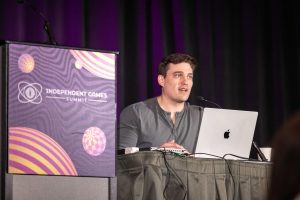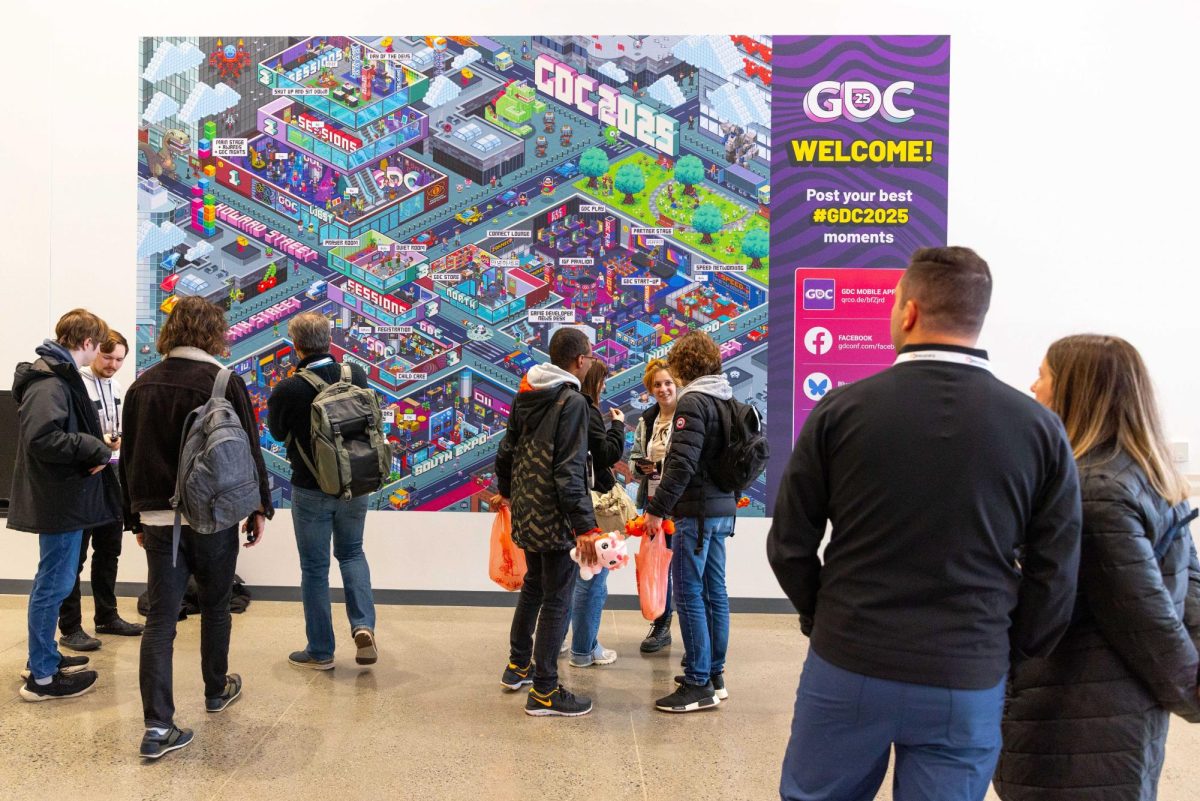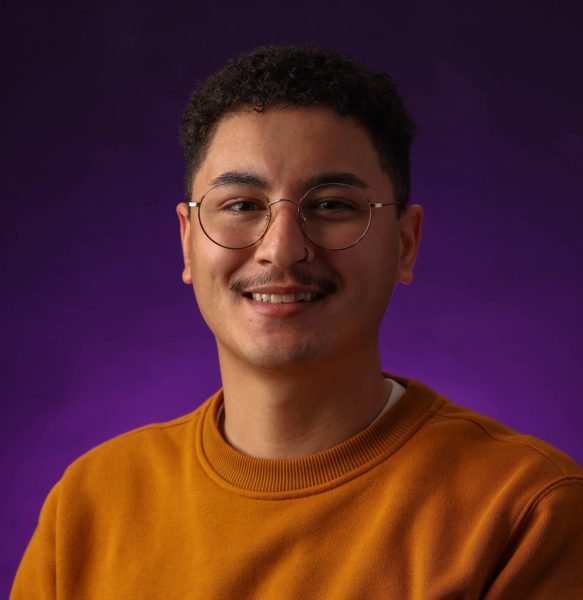Video game developers filled the halls of Moscone Center to hear from their peers and industry veterans, looking for guidance and hope. In between talks, they walked through salespeople hawking the artificial intelligence that so many fear will replace them.
This year marks the 49th annual Game Developers Conference at the Moscone Center in downtown San Francisco, which drew nearly 30,000 attendees last year. Video game developers, writers and students filled Howard Street from March 17 to 21 to hear discussions and participate in workshops, which ranged from AI to mass incarceration.

The video game industry has been in a state of disunity with thousands of layoffs every year since 2022 and AI threatening to replace writers and artists. Yet, the passion for game development lives on, as shown by the popularity of GDC panels focusing on the humanity of game development.
On the first day, a room was packed with attendees for a panel with game writers. A few of the questions came from graduate students, recent graduates, poets and journalists who hope to join the industry as narrative storytellers.
The panelists fielded questions about building a portfolio and what it is like to be in a writer’s room for the first time.
“Learn the vocabulary,” said panelist Michelle Clough. “Learn what you like about other people’s writing.”
They also gave attendees a look inside the tougher parts of the industry for writers. The speakers were asked about burnout in game development from a writer’s perspective. They advised telling directors how much a writer’s time and artistry is worth and seeing if they still want to give them last-minute work.
The writers were also asked about the possibility of their jobs being taken by artificial intelligence, as has happened to writers and artists across many industries. Their answers were less ominous than some were expecting.
“AI lacks context,” said Adanna Nedd, an independent writer and panel moderator. “Game narrative writing is heavy on context.”
The game writers said they have yet to see a large language model produce a shippable script and that whatever AI produces must always be reviewed by a human writer.
The next day, those who had questions and concerns about AI in game development had the opportunity to attend another popular panel titled “The Human Cost of AI.” Lone speaker Rez Graham approached the dire topic with urgency and levity, getting chuckles from the crowd throughout his punchy lecture.
Graham has been a software engineer at Electronic Arts since 2010 and has been speaking on the pros and cons of generative AI since 2012. Graham began his talk with the point that generative AI creates through stolen work.
“At best, it is legally gray,” said Graham. “At worst, it is illegal.”
Graham showed AI-generated content side-by-side with nearly identical screenshots from the movie “Dune” to show the audience a view of how programs like Midjourney, which Graham called out by name, are stealing art to reproduce through AI.
“Think about who you’re taking from,” Graham said. “Understand where your training data comes from. Don’t ignore it.”
Graham also spoke about the usage of AI outside of the workplace, saying that students and researchers are given the grace to “play” around with AI. He poked at usage in the workplace and asked, “Are we just playing?” before showing statistics about the environmental impact of using generative AI. He ended the speech calling AI in game development “the death of art.”
Video games being art was once questioned, but over time, game creators have shown that the medium is worthy of that title. Musician and game developer Spencer Bambrick showed just how versatile an art form video games are.

Bambrick talked about the process of making “Bird,” an interactive documentary telling the story of his creative partner Darrell Fair, an artist and activist who is serving 50 years in prison for a crime he says he did not commit.
“I was trying to tell a story about incarceration, but the truth is I had absolutely no personal experience with it,” said Bambrick. “I ran the risk of doing more harm than good if I didn’t consider what my place was in the story.”
The two partners met through the Exoneration Project, which represents Fair. Fair wanted to share his story with the hope of preventing others from experiencing what he did.
The interactive documentary involves players going through a gallery of animations and audio recordings that Fair created in prison.
“As the story unfolds, players learn about brutal police treatment,” said Bambrick. “You’ll hear Darrell talking more about his initial conviction and about how he felt about the state defining him and valuing his worth.”
Each frame of the animations in the game were hand-drawn by Fair, then scanned and put together by Bambrick. This process was done to keep the human elements of the art in the game.
“Just as it was my job in the interviews to ask questions and let Darrell tell the story himself, it was also my job to take the artwork he’d given me and to preserve it as accurately as possible,” Bambrick said. “His fingerprints are literally on these frames, and it doesn’t get more authentic than that.”








